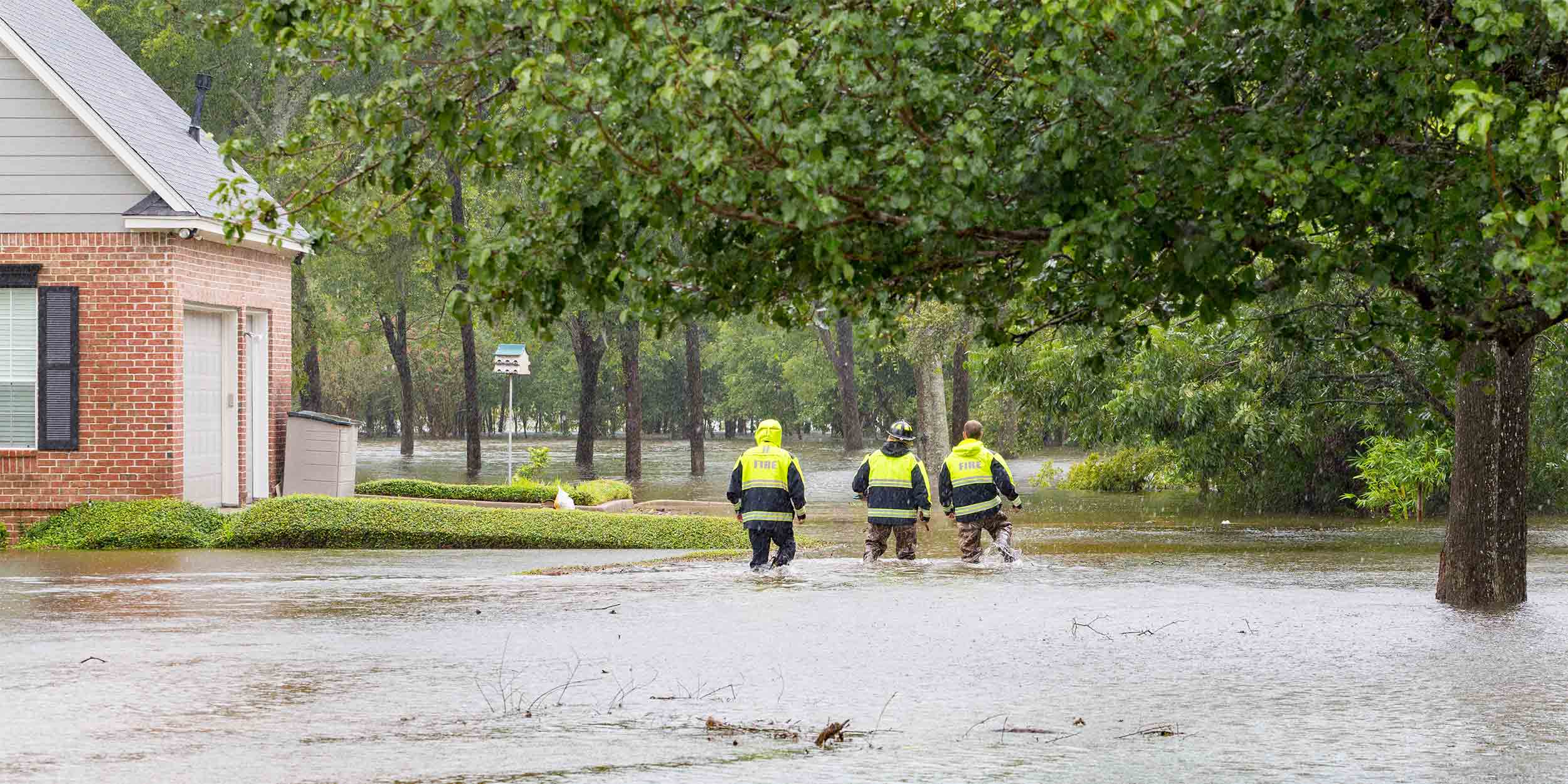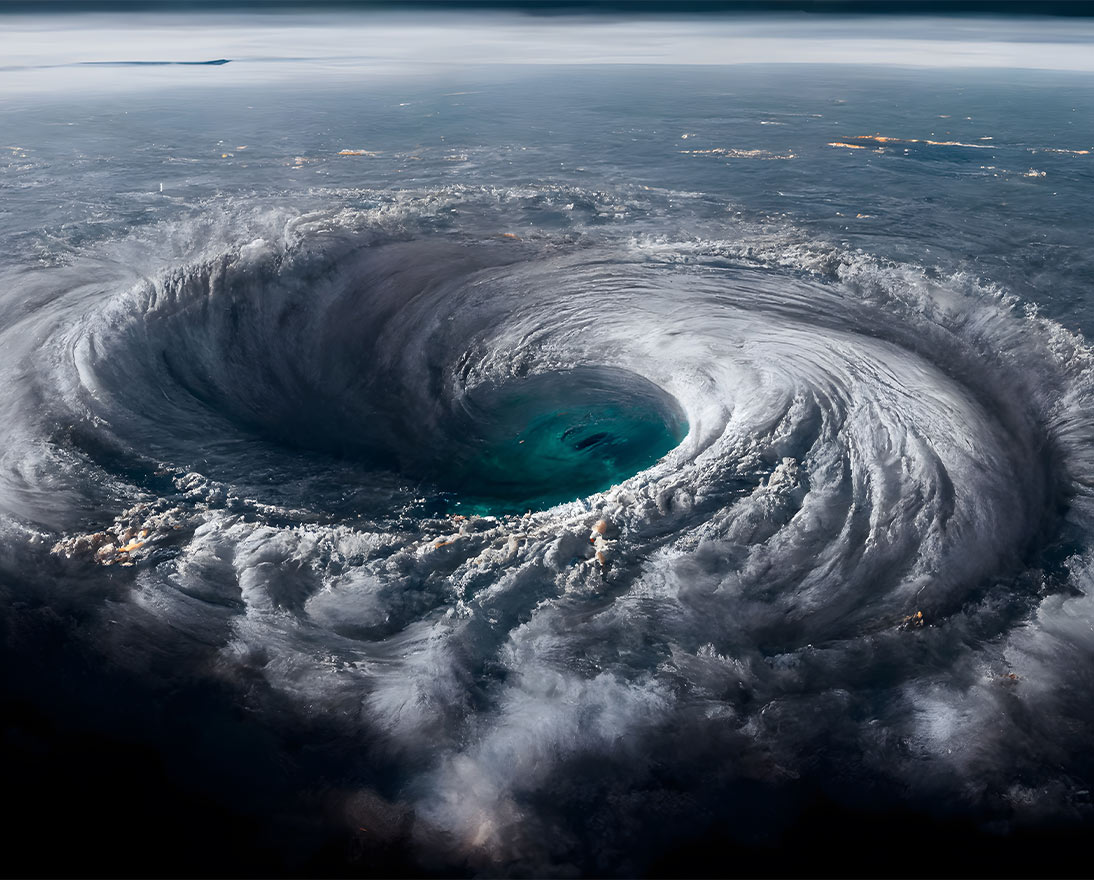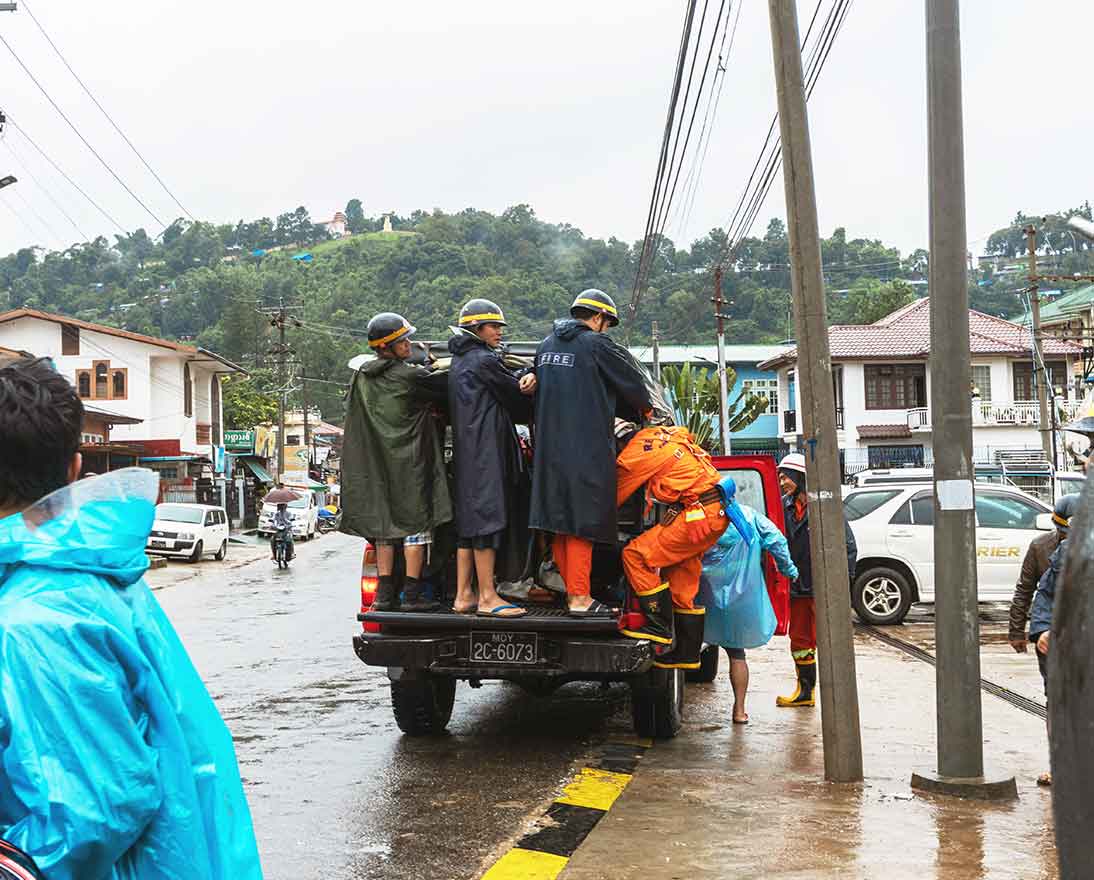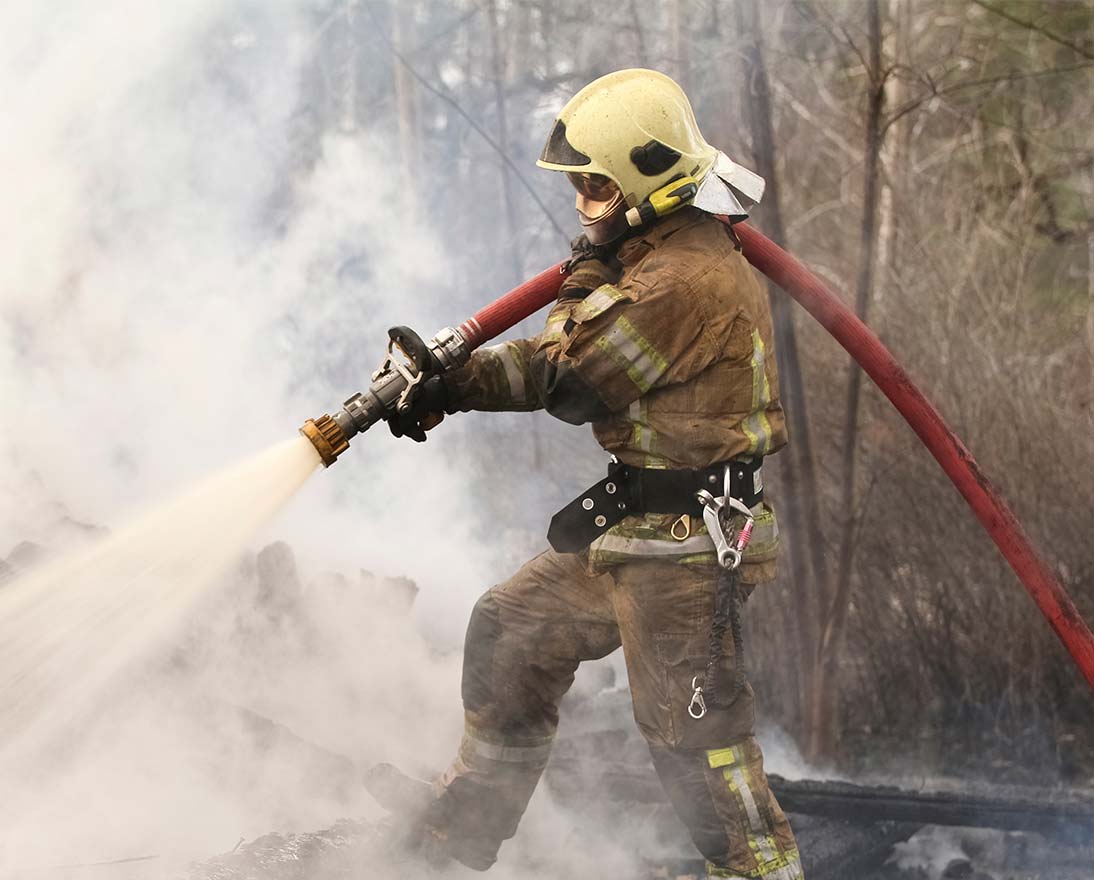Three common flood types explained
Natural hazardsArticleApril 17, 2025
There are three common types of flooding. By understanding the differences, you can better protect yourself from the next potential flood.
Floods affect more people globally than any other type of extreme weather event. They can cause widespread devastation that displaces people, damages property and critical public infrastructure, and can even result in the loss of life.
Looking ahead, the prevalence of flooding is projected to rise, both coastal and inland. This is primarily due to rising sea levels, increased intensity of heavy rainfall, and changes in storm patterns.
“Floods can destroy whole communities and cause billions of dollars of losses,” says Amar Rahman, Global Head of Climate and Sustainability Solutions at Zurich Resilience Solutions, Zurich’s risk management consultancy. “It’s vital that people, businesses and communities prepare for all flooding eventualities, especially as floods can impact areas located far from water sources.”
There are three common types of floods: fluvial, pluvial, and coastal floods. Each flood type occurs and is forecasted in different ways. The flood impact also varies, as do the actions required to avoid or minimize flooding damage.
Here are the three most common types of floods and how to mitigate their impact:
Fluvial floods (river floods)
A fluvial, or river flood, occurs when the water level in a river, lake or stream rises and overflows onto neighboring land. This can be due to excessive rain or snowmelt.
Fluvial floods can cause widespread damage as the overflow affects smaller rivers downstream, potentially causing dams and dikes to break and swamp nearby areas.
To determine the probability of fluvial flooding, models consider past and forecasted precipitation, current river levels, and soil and terrain conditions. The severity of a fluvial flood is determined by the terrain profile, soil water saturation, and the rainfall duration and intensity within the catchment area.
In flat areas, floodwater rises slowly and often remain for days. In hilly or mountainous areas, floods can occur within minutes, drain quickly, and cause debris flow damage.
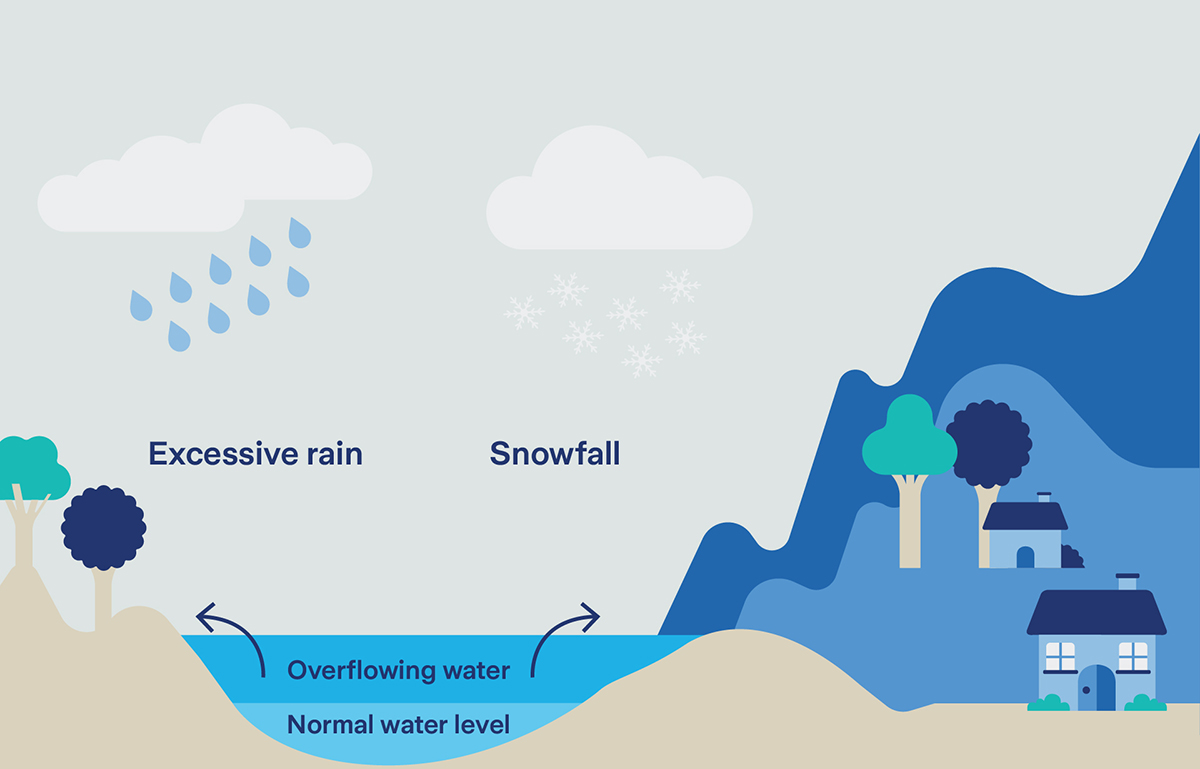
Pluvial floods (flash floods and surface water)
Pluvial floods occur when extreme rainfall creates flooding independent of overflowing water bodies. They can happen in urban or rural areas, even without nearby bodies of water.
There are two common types of pluvial flooding:
- Surface water floods occur when urban drainage systems are overwhelmed, causing water to flow into streets and nearby structures. These floods develop gradually, allowing time for evacuation, and are usually shallow (rarely more than 1 meter deep). They pose no immediate threat to life but can cause significant economic damage.
- Flash floods are characterized by intense, high-velocity water torrents triggered by torrential rain or sudden water releases from upstream levees or dams. They are dangerous and destructive due to the force of water and debris swept up in the flow.
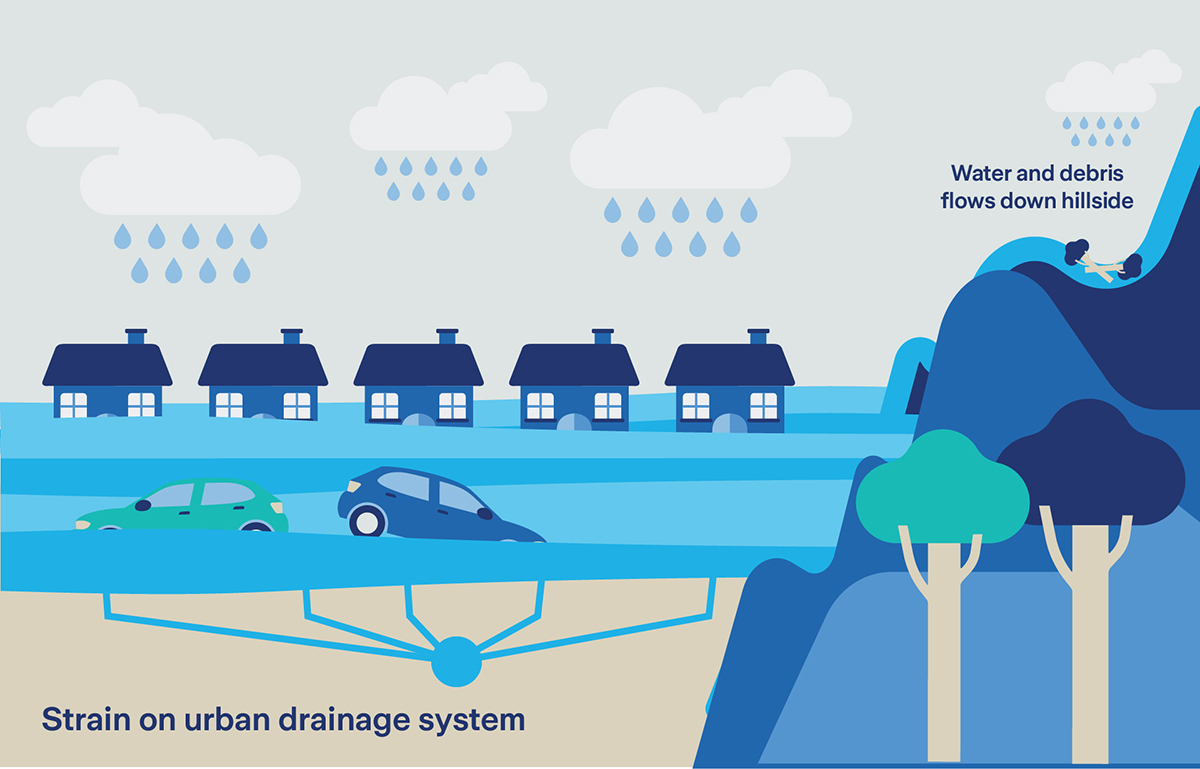
Coastal flood (storm surge)
Coastal flooding is the inundation of land along the coast by seawater, typically caused by intense windstorms coinciding with high tide, or by tsunamis.
Storm surge, often the greatest threat associated with hurricanes or typhoons, occurs when high winds force water onshore. The impact is dependent on the tide, with high tide exacerbating the flooding and causing devastating loss of life and property.
Storm surge severity is determined by several factors, including the strength, size, speed, and direction of the windstorm. Onshore and offshore topography also play a major role. Flood models use this information, along with data from historical storms that have affected the area, to determine the probability and magnitude of the storm surge.
In the future, rising sea levels will increase the risk of all types of coastal flooding, endangering more coastal cities and communities.
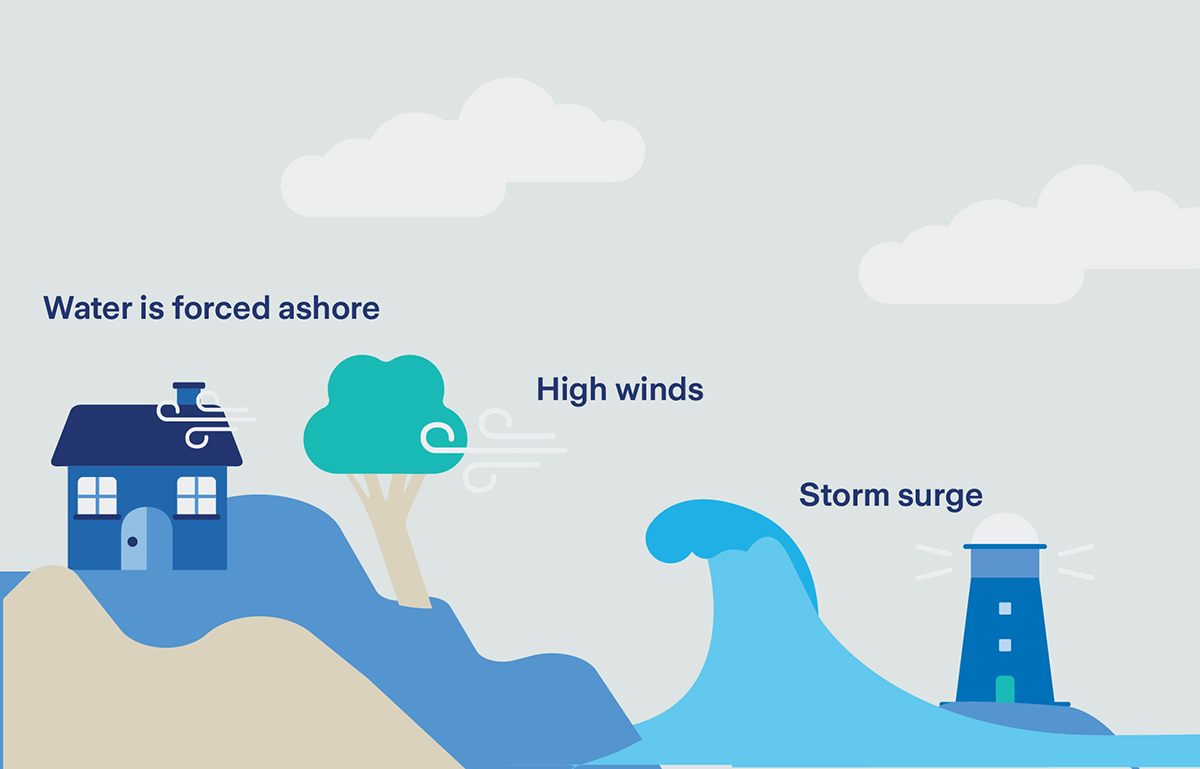
Understanding the different types of floods – fluvial, pluvial and coastal – can help you take appropriate measures to mitigate their impact. With the frequency and severity of floods likely to increase, it is essential to stay informed and prepared to protect lives and property.
By being aware of the risks and taking proactive steps, communities can better withstand the devastating effects of flooding.
Climate Resilience
Our Climate Resilience experts help you identify and manage climate risks, and prepare you for climate reporting.
